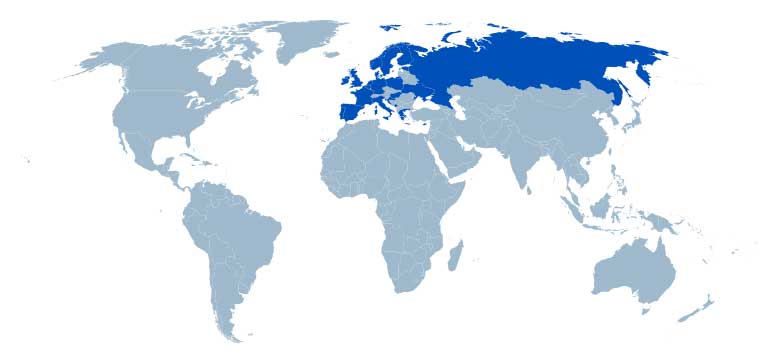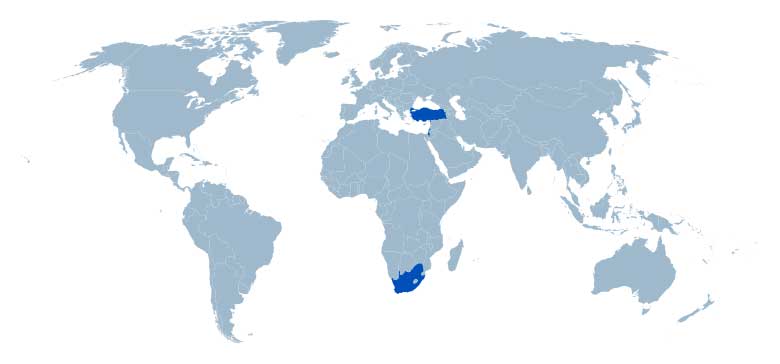Hull Blisters
What is it and how do I solve this?
This causes hull blistering below the waterline on GRP boats and happens due to a variety of complex interactions. But there are ways to help prevent it and keep your boat in the very best condition.
How to recognize it

Numerous blisters below the waterline or just above the waterline in the hull itself.
What causes it
The process of osmosis is usually attributed to one of three root causes:
Water ingress from outside the yacht.
Water ingress from the inside: bilges, for instance.
Reactive impurities in the resin.
Water ingress has been found to be the cause of the osmosis in about 85% of all cases. Such cases can now be treated very easily. In this situation water reacts with the impurities in the laminate or the polyester itself, or the coating agent on the glass reinforcement to form free acidic substances. In this process, known as hydrolysis, the resin is broken down into its component parts by the water.
It is worth noting that many polymeric materials (plastics) are permeable to water and to water vapor to some degree but it is the fact that in the manufacturing process of the resin certain traces of un-reacted constituents leads to breakdown and ultimately the onset of what is referred to as “osmosis."
The remaining 15% of cases are the most difficult to treat, where reactive impurities or lamination deficiencies are the cause of the problem. It’s possible that the chemical reaction at the resin-manufacturing stage was incomplete. That is, about 0.1% of the acid or alcohol remains ‘free’ in the resin. In such cases, the resin supplied to and used by the builders is incapable of being completely reacted. This means the ‘free’ molecules of acid or alcohol are available to participate in secondary, undesirable and unintentional chemical reactions within the laminate.
In addition, the peroxide catalyst used in its construction, and any other accelerators used, don’t form part of the solid matrix and exist as impurities in the laminate. Trace constituents are known to react with elements in water generating compounds that create pressure, which is turn into blisters in the gelcoat. The problem often manifests itself in the first two or three years of the hull’s life.
A problem may also occur when a vessel may have lived a reasonably long life in cool waters and is then moved to a region with much warmer waters. The change in temperature can be sufficient to cause what was a sound hull to then show osmosis symptoms after just a few years.
The stages of osmosis
Stage 1 – Water penetration
Water slowly permeates the outer layer of gel coat ( the hard glossy colored outer skin that you see on GRP/FRP hulls) that protects the inner laminate and gives the vessel its attractive finish.
Stage 2 – Solutions form in voids
In the laminate there are voids (air spaces and/or bubbles) that the moisture can seep into. In these voids the water can slowly react with and breakdown various un-reacted components (known technically as hydrolysis).
The result is a high concentration of dissolved chemicals in the cell and by the process of osmosis more water is drawn into the cell in an attempt to equalize the concentration in the cell with that outside the cell. This cycle then continuously repeats itself.
Stage 3 – Blister formation
The effect of more water continuously being pulled into the cell is a rise in pressure leading to swelling and blistering as is most often seen on affected hulls.
Stage 4 – Laminate failure
Eventually some of the blisters will rupture leading to liquid seeping out of them. The increased pressure also tends to accelerate the breakdown of the laminate resin. Deeper in the laminate larger blisters together with the resultant higher pressures can lead to various levels of laminate failure.
How to prevent it
Even when osmosis doesn’t appear to be present, there is a continuing risk for all GRP/FRP boats. To minimize this, apply a thick epoxy coating (InterProtect) to the hull to create a separation layer between gelcoat and water. This will delay the onset of any osmosis that’s likely to happen.
How to treat it
Have a survey carried out and then depending on the results, there are two basic options that can be considered:
Option 1.
Survey result: Evidence of osmosis includes blistering in the gelcoat.
Recommendation: Treatment system.
Full removal of the gelcoat will probably be needed. Then thorough cleaning and drying before applying HT9000 Epoxy Resin and Interprotect.
Option 2.
Survey result: Extensive blistering and craters in the gelcoat and underlying laminate.
Recommendation: Removal of gelcoat and layers of laminate.
Removing laminate layers will turn this job into a constructional rebuild programm. After thorough cleaning and drying, re-laminate with HT9000 Epoxy Resin and suitable glass reinforcements and prime it with InterProtect.
Paint your boat like a pro
Find the best products to keep your boat in great condition
Get all the support you need to paint with confidence
Benefit from our continuous innovation and scientific expertise






